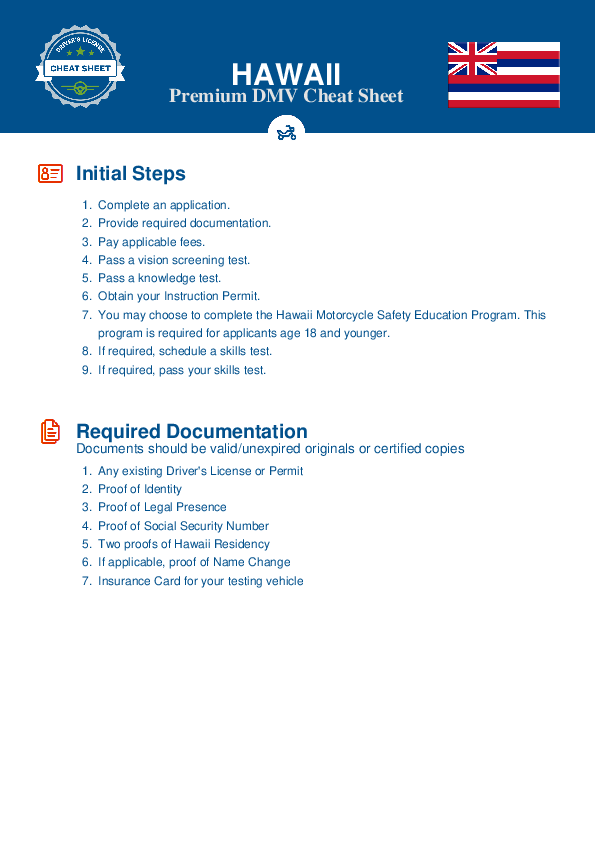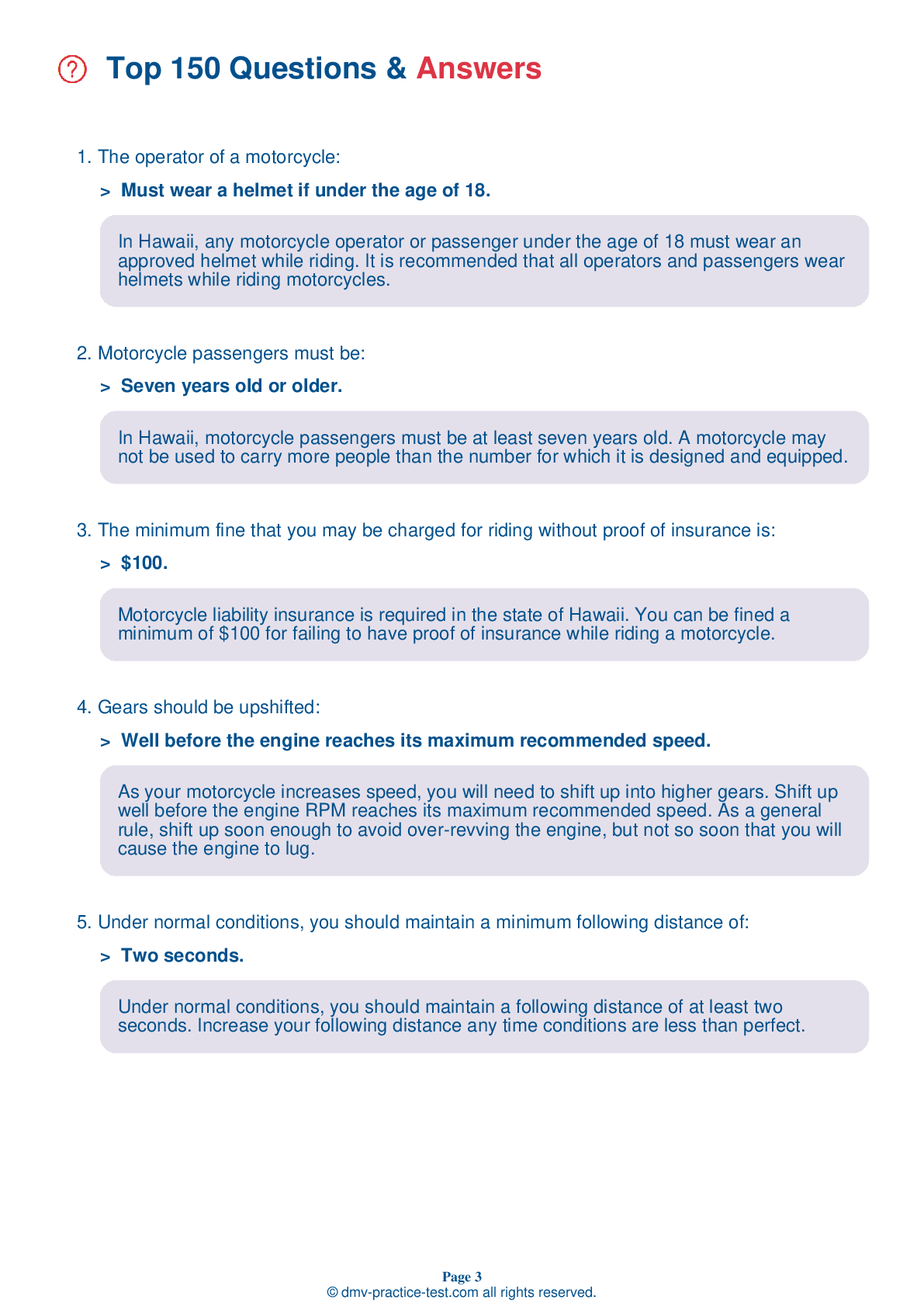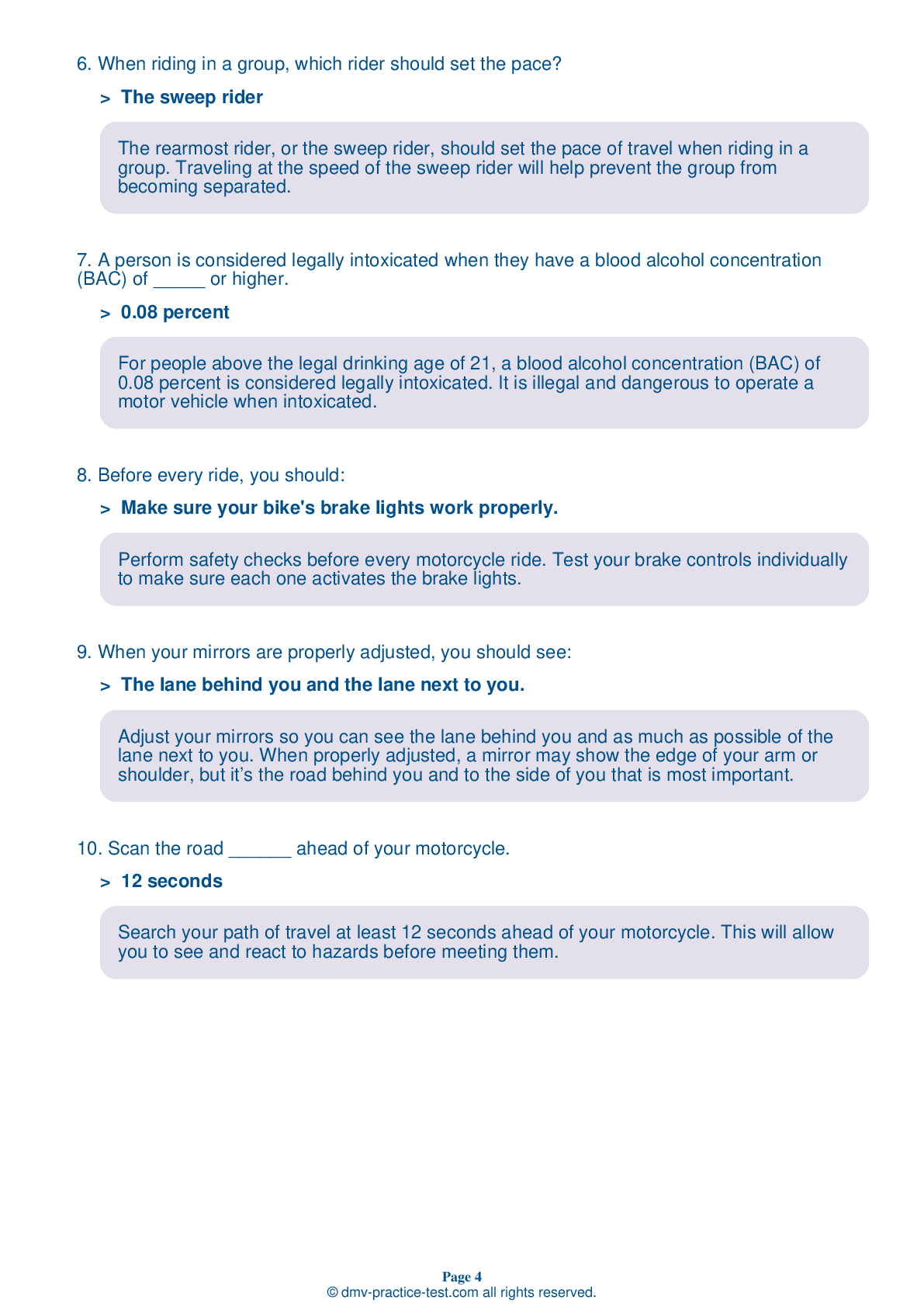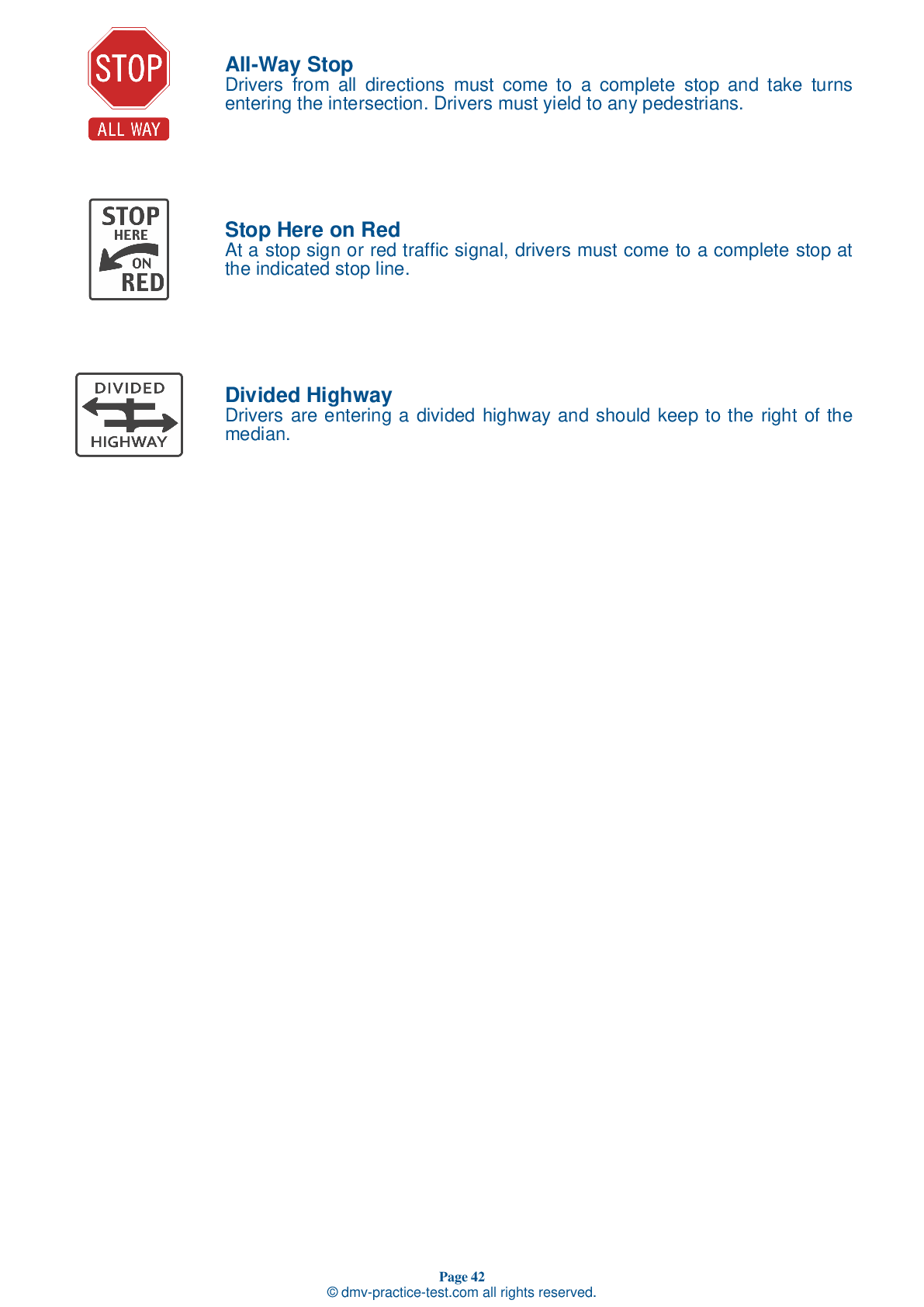Motorcycle Test | License HI 2025 | FREE Online Practice! #9 Page 3 of 4
Take this FREE motorcycle test (license in HI 2025) to check your knowledge of the road rules. To improve your results, download a motorcycle handbook online, study theory, and practice for free on our website. Still worried about how to get a motorcycle license in Hawaii in 2025? Check our website for more sample tests, train as much as possible, and boost your grades!
13 . When preparing to pass another vehicle on the left, you should:
When passing another vehicle on the left, you should ride in the left portion of your lane. Signal your intentions and check for traffic. Pass when it is safe to do so, then signal and return to your original lane when traffic allows.
14 . If you find yourself riding alongside another vehicle, you should:
Riding directly next to another vehicle is dangerous because you could be riding in the vehicle's blind spot. Additionally, the vehicle may block your route of escape if another hazard arises. If you find yourself riding directly alongside another vehicle, either speed up or drop back.
15 . When approaching an intersection, you should:
Never assume that other drivers see you, even if they make eye contact with you. It is not uncommon for drivers to look directly at a motorcyclist and still fail to notice them. Always reduce your speed when approaching an intersection.
16 . When you are stopped, you:
Shift down through the gears with the clutch as you slow or stop. Remain in first gear while you are stopped so you can move quickly if needed.
17 . Before every ride, you should:
Perform safety checks before every motorcycle ride. Test your brake controls individually to make sure each one activates the brake lights.
18 . Generally, the body eliminates how many alcoholic drinks per hour?
On average, a person's body can eliminate the alcohol content of about one drink per hour. The amount of time required to lower a person's blood alcohol content (BAC) can vary, so it is safest not to operate any motor vehicle after consuming any amount of alcohol.
See the exact questions that will be on the 2025 Hawaii DMV exam.
99.2% of people who use the cheat sheet pass the FIRST TIME
Jeneen was tired of paying $5/gallon. She got herself a scooter that required the motorcycle license. She studyed the motorcycle test cheat sheet and passed her test the next day!
Christopher tells us how he knew nothing prior to obtaining the motorcycle study guide, and he only got one question wrong because he clicked on the wrong answer by mistake.



